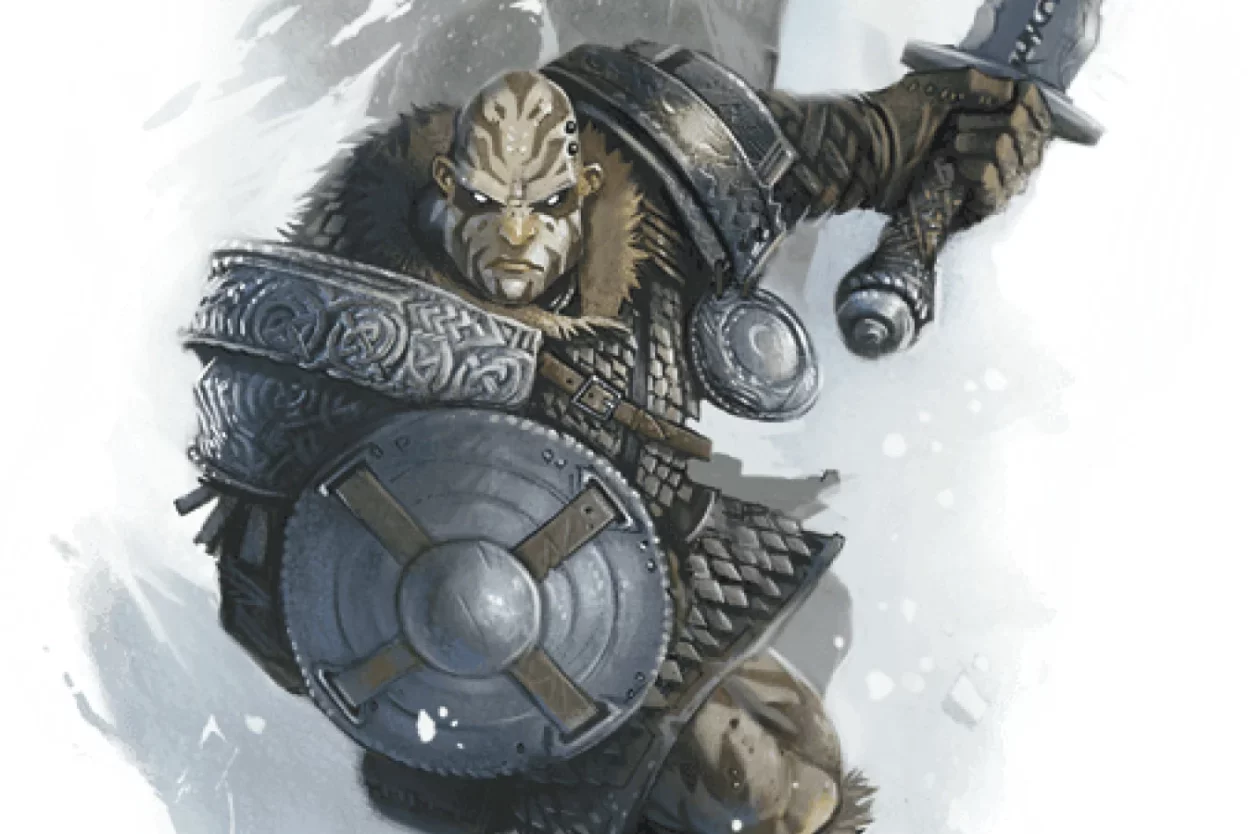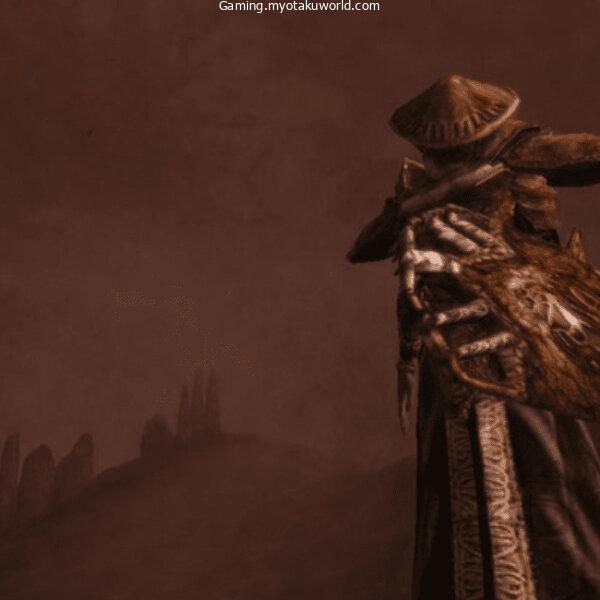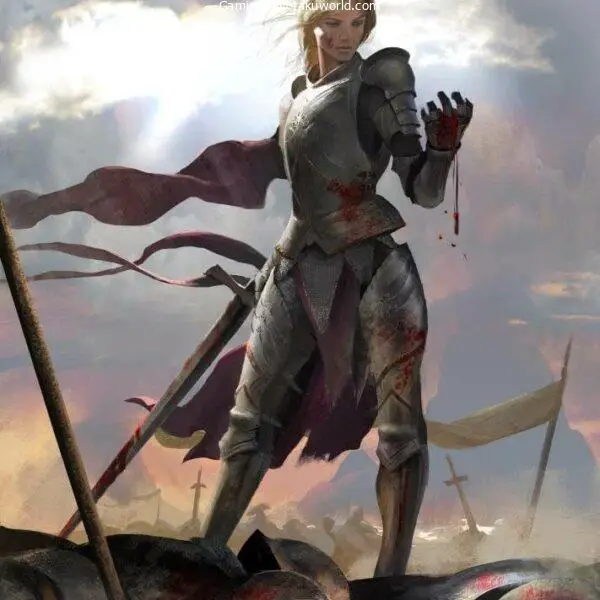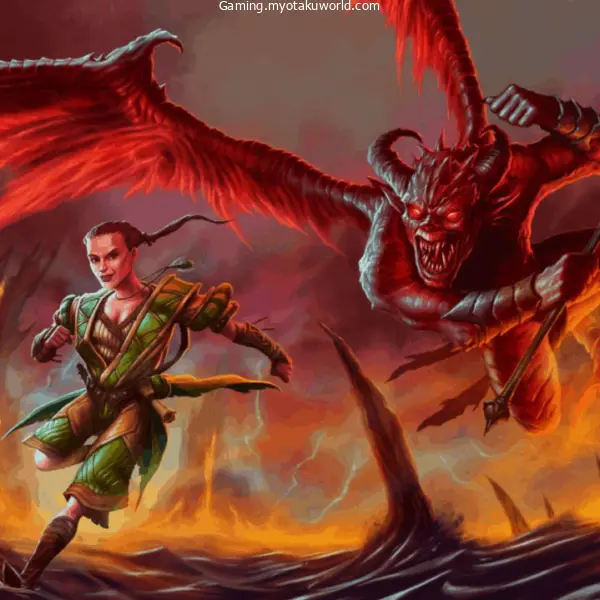No longer are there only Dwarves, Elves, and Humans. There are a lot of playable creatures in the D&D world.
From drow to orcs to everlongs, you can find the race of monster that you like best. There are also converted content and homebrew things, just in case you’re still not sure what you need to do.
The Goliath is one of the newer races that the player can choose from. This race is a mix of giants and humans, and it is a pretty flexible class to play.
But we need to figure out how to roleplay this race before we can talk about its stats.
What are Goliaths in 5e?
Goliath are humanoid creatures of a medium size who live in the cold mountains of Toril. They have skin that is hard like stone and is made up of many different patches.
The Goliaths think that those marks can tell them about their fate or destiny. They would never get a tattoo because they think it would change their future.
Since Goliath has to hunt for food, water, and a place to live on the highest peaks of the Torii mountains, its main asset is its ability to compete.
The tribe will die if each Goliath doesn’t do what it can to help it stay alive. On the other hand, if the Goliath does more than its share, everyone will live.
Only Goliath really values independence and individual skill, and they tend to keep track of points and see everything as a battle. They don’t mean this in a bad way. Instead, they want to help everyone in the group get better.
For them, having fair competition means that ability, dedication, and hard work are the most important things.
They choose to rely on themselves instead of different benefits and disadvantages that can change as the terrain does.
They also try to do things better than they did before, both in battle and at work. If a Goliath is able to kill a dragon, he will spend the rest of his life looking for a bigger dragon to kill.
Most of the older goliaths have already fought and died when they were at their strongest.
Goliath 5e Traits
Ability Score Increase: Adding 2 to STR and 1 to CON is great for a few builds and works well with them, but it won’t help most classes in any way.
Size: Most races are about the same size, which is medium. Medium is neither good nor bad. Goliaths are between 7 and 8 feet tall and weigh between 280 and 340 pounds. They are at the top of the Medium size range.
Speed: Goliaths can walk about 30 feet per minute.
Natural Athlete: Being good at free skills is always great. The Goliath’s huge +2 STR bonus makes Athletics a great choice for them.
Stone’s Endurance is a great way to use your reaction, and it lets you start over after a short break. At lower levels, reducing damage by a d12 + CON modifier is a huge deal, and it stays important throughout a game.
Powerful Build: Not everyone plays with strict limits on how much they can carry, but if you are a hoarder, Powerful Build can let you get away with some silly things. It’s more interesting and likely to come up in a campaign if you can push, pull, or lift more weight.
Mountain Born is another trait that makes the Goliath more likely to stay alive. Cold damage is one of the most common types of damage, so having a protection to it built in is very helpful.
How to Play the a Goliath Character?

Goliaths are kind of like the Klingons from Star Trek. They put honor and power above everything else and even give themselves disadvantages in competitions so that everyone has a fair chance. You don’t have to play your Goliath like the legend says, but if you do, it will be very interesting.
Goliaths are different from the other races in the party because they have a few unique skills. From the Elemental Evil Player’s Compendium, here are some of them.
- Athletic by nature. You know a lot about the Athletics skill.
- The Endurance of Stone. You can sometimes ignore pain if you put your mind to it. You can use your response when you take damage to roll a d12. Add your Constitution modifier to the number that was rolled, then subtract that number from the damage. You can’t use this trait again until you’ve taken a short or long rest.
- Strong Construction. You are one size bigger when figuring out how much you can move and how much weight you can push, pull, or lift.
- Mountain Raised. You can take less damage from cold. You are also used to being at high altitude, even above 20,000 feet.
- So, goliaths are pretty strong and athletic creatures with a strong need for fairness, self-sufficiency, and personal responsibility. This doesn’t stop them from working with other people, but it does keep them from relying on other people. Goliaths need to be on their own at the end of the day.
The Endurance perk of the Stone can make it easier for you to stay alive, and based on your score, it can even make a hit that would normally kill you into one that does less damage or none at all.
With a powerful build, a creature of medium size can lift, push, and pull the same amount as a creature of large size, which is pretty cool.
Mountainborn can be very useful when you’re going on adventures in the mountains because it will help you avoid taking damage from the cold. Damage resistance is always a good thing.
What Classes Should a Goliath Pick?
Obviously, some classes think of a six- to seven-foot-tall, 300-pound giant who usually uses two-handed weapons. They can also carry a lot of stuff, which makes them great for fighters or barbarians who want to be a bit of a tank.
If you want your Goliath to know magic, you can help them learn a few spells by making them a paladin or a priest. Goliaths can mostly use magic that helps them defend themselves or even the odds in a fight.
As a cleric, you can either focus on getting smarter so you can cast more spells or stick to the basic skills to get stronger.
This fits with what is known about Goliaths, since they are creatures that can take care of themselves and often train their natural skills in case they lose their power.
Classes like bards, druids, and wizards won’t work well for a goliath. They don’t have the right stats to cast spells consistently, and they can’t wear armor and cast spells at the same time.
The Stone’s Endurance can really counteract the barbarian’s rash attack. With reckless attack, a savage can stop trying to defend and just go for the attack.
Attacking without thinking can give you advantage on your next attack, but until your next turn, all strikes against you have advantage. With Stone’s Endurance, you can protect yourself from that damage.
It’s the best way to fight, and it can give you choices when you’re in a fight. Fighters and Paladins are also good classes for this.
What’s in a Name?
The fact that each Goliath figure has three names is another interesting thing about making them. For example, they have their real name, a nickname, and a name for their group.
Aukan Threadmaker Elanithino could be a very big name. You can talk to your DM about what groups your Goliath could be a part of.
A goliath’s nickname can change, and it usually has to do with something great they did or a big mistake they made.
Often, the tribe chief or an older person will get a new nickname, or friends of the Golitah will start calling him by a new name that quickly becomes popular.
A great adventure hook for a Goliath could be one where they try to find or earn a new nickname for themselves.
Roleplaying a Goliath Effectively
If you want to play Goliath in the nicest way possible, you should focus on being self-sufficient and playing fairly with your group.
You can trust your friends and fight with them, but you can’t always count on them. You know that sometimes, no matter what, you have to be alone and fight your enemies on your own terms.
You should also pay attention to the spirit of competition, which will drive competition between you and the other people in your party.
You can help party members who are down or having problems of their own start getting better, and they also focus on fair play when it comes to competition and battle.
For example, if a goliath manages to break an enemy’s weapon during a fight, he will put his own weapon away and use his hands to fight the enemy who is now unarmed.
If the Goliath is climbing against the less experienced climber in a race, the character might put rocks in his backpack to give the less experienced climber a good chance.
Keep in mind, though, that Goliath will only hurt himself to make the game fair. He won’t do it to hurt himself.
The only reason they might give themselves a disadvantage is to make the competition better, but even with the disadvantage, they still need to have a chance to win.
Focus on the Past
Goliaths also try to be better than everyone else because they think that will make them stronger. You can keep track of what your character does. For example, you could write down that your character saved a town, killed a giant, or got a special tool.
Then, your character wants to do something better. For example, if your Goliath has already saved a village from a dragon, it won’t stop until it has saved a big town. If they kill one giant, they won’t stop until they kill an even bigger one.
In the woods, goliaths can’t stay still or be good at what they do, and the same is true for being part of an adventuring group. Your Goliath will always try to get better, take on the next foot, and climb the next hill. Once it does that, it will try to do even more.
You can decide if your Goliath will become blinded by the need to win and maybe even dangerous if it has to face bigger enemies at the cost of the rest of the party.
FAQs
What are some Story Hooks for A Goliath?
If you have a single creature or a family that is focused on Goliath, it might be hard to imagine them leaving their home and joining a group of several other creatures.
Well, according to Goliath law, if a Goliath lies, steals, or acts in a dishonorable way, he or she is rejected or sent away. If you want to make it easy for your Goliath to join a group, they could be rejected by their tribe or have left it to find excitement in the wider world. Your Goliath could also join the group to get a nickname or do something good to stand out in the eyes of their tribe. These two story hooks are general enough to work with any kind of journey and give both the player and the DM a lot of room to explore.
Are Goliath’s Too Reckless?
Legend has it that Goliaths are always trying to top themselves, and that most of them die of old age. See the enemy. It might be easy to play your Goliath as a glory-hungry warrior who charges into battle without thinking, but Goliaths are also loyal to their friends and allies and want to see them win. They will also never rush into a fight they can’t win. They will always try to play fair because their main goal is to win the fight and get some glory for themselves.
So, they aren’t completely wild because they want to play fair and make sure they can win the fight. They also have a saying that you can repeat to yourself over and over as you build your character. “Today’s enemy could be tomorrow’s friend.” If they want to win, they won’t have anything bad to say about their rivals. Instead, they want to make everyone better, and they also think that their rivals are still their friends.
Can a Goliath be Lawful Evil?
Goliaths tend to be pretty legal, and while lawful good and lawful neutral are pretty standard for a goliath, you might wonder if a goliath can be lawful evil.
Well, being “lawful evil” doesn’t mean they are sociopaths. It means they respect law and order very much. Lawful evil goliaths can care about rules and order, but they also care about themselves.
So, these creatures will try to get glory for themselves and for their group, and they will make sure that everyone knows about it.
They don’t like to break the law and don’t care about people’s rights, so they are very authoritarian. You can have a Goliath that cares a lot about following the rules and making sure that competition and fair play happen at all costs. If you choose to play them, other legal alignments are also very easy to slip into.










Leave a Comment